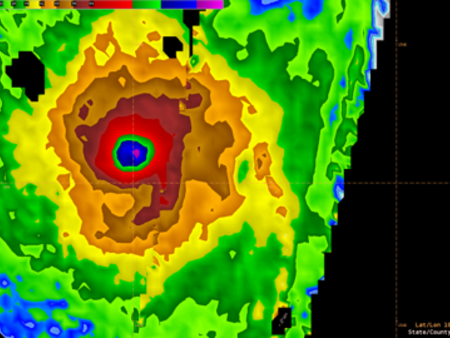Assimilation of SMOS L-band Wind Speeds: Impact on Met Office Global NWP and Tropical Cyclone Predictions
In this study we evaluate the use of SMOS wind speeds within Met Office numerical weather prediction (NWP). Observation minus model background (O−B) departure statistics are used to investigate SMOS error characteristics, quality flags, and develop a quality‐control method. Observation errors and spatial correlation distances are estimated using a statistical method. Observing system experiments are performed to diagnose the impact of SMOS on NWP forecasts and analyses, including tropical cyclone (TC) predictions.
The quality of SMOS retrievals appears reduced in the presence of sea ice, strong river plumes, and radio‐frequency interference (RFI) contamination. SMOS wind retrievals have reduced sensitivity at low–moderate winds speeds. Above 15 m s−1, SMOS winds tend to be faster than the model and have higher O−B variance compared to scatterometer winds from ASCAT. Above 30 m s−1, root‐mean‐square errors from SMOS are smaller than ASCAT. The impact of SMOS on TC predictions is sensitive to the use of the Met Office TC Central Pressure Initialisation Scheme (TCCPIS) which is confirmed to have a large, beneficial impact on intensity predictions. The assimilation of SMOS results in a small increase in TC intensity leading to a reduction in pressure/wind errors in the analysis and short‐range forecasts, but cannot replicate the impact from the TCCPIS. The spatial resolution of SMOS is a clear limitation for analysing TC structure. In the case of Hurricane Kilo, the analysed and short‐range forecast central pressures are closer to best‐track when the storm radius is large and the eye is resolved. The challenge is to extract the useful information on intensity whilst preserving storm structure.
Cotton J., Francis P., Heming J., Forsythe M., Reul Nicolas, Donlon C. (2018). Assimilation of SMOS L-band Wind Speeds: Impact on Met Office Global NWP and Tropical Cyclone Predictions . Quarterly Journal Of The Royal Meteorological Society , 144(711 Part.B), 614-629 . Publisher's official version : https://doi.org/10.1002/qj.3237


